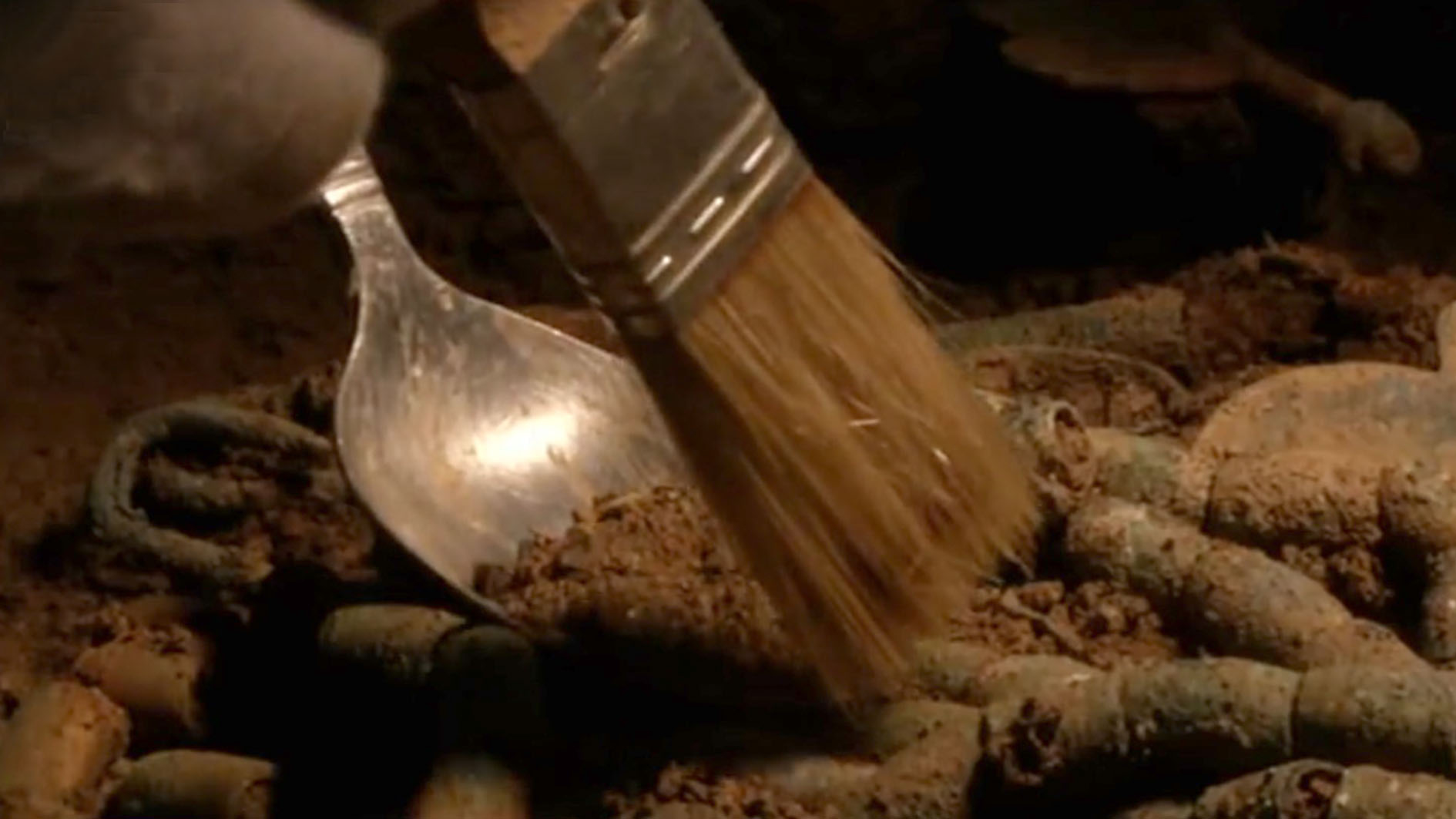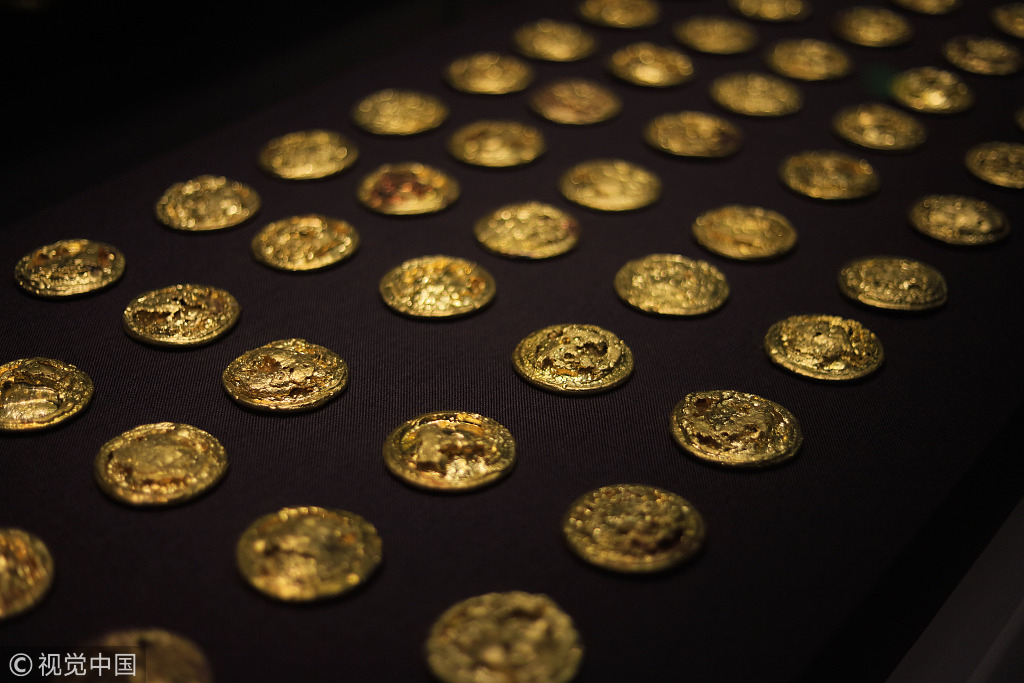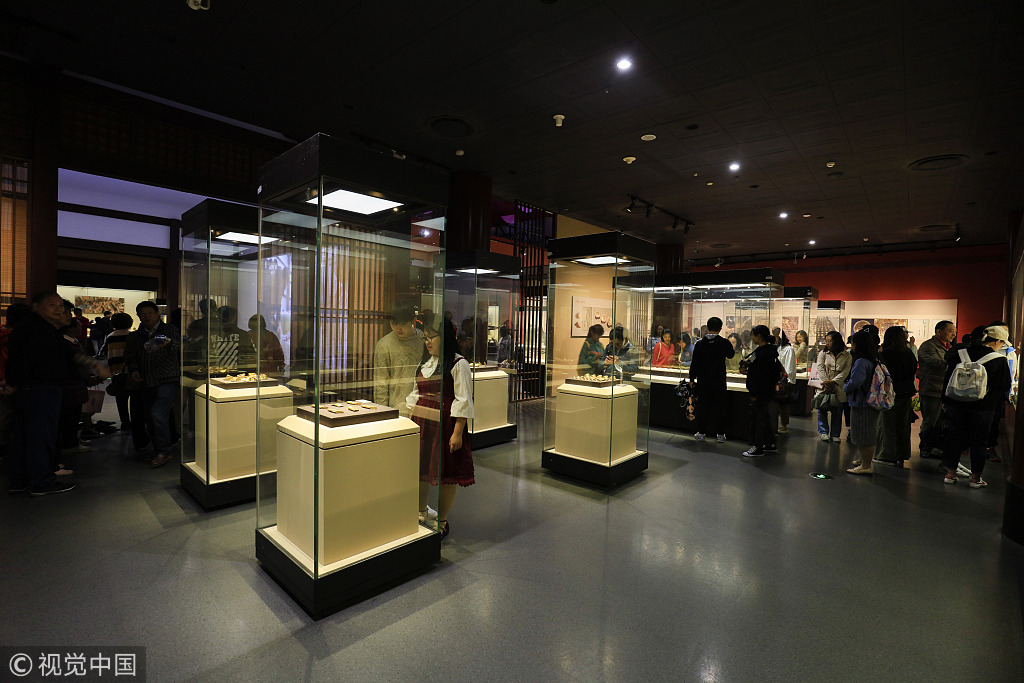
Culture
20:05, 20-Mar-2019
Bamboo slips reveal how Chinese played chess 2,000 years ago
By Wang Wei
01:52

In east China’s Jiangxi Province, the exploration of an ancient tomb is shedding light on life from 2,000 years ago – in particular, how people played chess.
A rare handbook made of bamboo slips discovered in the tomb of Marquis of Haihun from the Han Dynasty is giving archaeologists from Peking University insight on how the game was played.
The writings detail instructions on the ancient board game known as Six Struggles, or "Liu Bo" in Mandarin -- widely considered the precursor of Chinese chess.

A view of an exhibition featuring archaeological finds from the excavation of the tomb of Marquis of Haihun in Jiangxi Provincial Museum, Nanchang City, Jiangxi Province, December 5, 2018. /VCG Photo
A view of an exhibition featuring archaeological finds from the excavation of the tomb of Marquis of Haihun in Jiangxi Provincial Museum, Nanchang City, Jiangxi Province, December 5, 2018. /VCG Photo
It enjoyed wide
popularity among the nobility for centuries, since the late Spring and Autumn
Period.
The script is believed to have been composed during the early Han
Dynasty over 2,000 ago when the game began to spread among
commoners.
"The script offers us a lot of insights about the rules of the ancient board game. Many of them correspond with those found in other ancient books on the subject," said archaeologist Yang Jun.

A view of an exhibition featuring archaeological finds from the excavation of the tomb of Marquis of Haihun in Jiangxi Provincial Museum, Nanchang City, Jiangxi Province, December 5, 2018. /VCG Photo
A view of an exhibition featuring archaeological finds from the excavation of the tomb of Marquis of Haihun in Jiangxi Provincial Museum, Nanchang City, Jiangxi Province, December 5, 2018. /VCG Photo
"It outlines the most popular strategies summed up in nine categories.
These writings on bamboo slips are the first complete treatment of the subject
so far discovered in China. It will allow us to understand more about the
leisure activities and social history at large during the Han Dynasty."
The excavation of the tomb of the Marquis of Haihun began eight years ago. So far, more than 10,000 artifacts have been unearthed, including gold ingots, pottery ware, jade ornaments, and a mirror frame painted with the portrait of Confucius.
The most valuable finds, however, are the nearly 10,000 bamboo slips, of which 5,200 have been decoded.
They include excerpts of such titles as The Analects by Confucius and The Book of Changes by Lao Tzu, in addition to volumes on rituals, medicine, and ancient cuisine.

SITEMAP
Copyright © 2018 CGTN. Beijing ICP prepared NO.16065310-3
Copyright © 2018 CGTN. Beijing ICP prepared NO.16065310-3